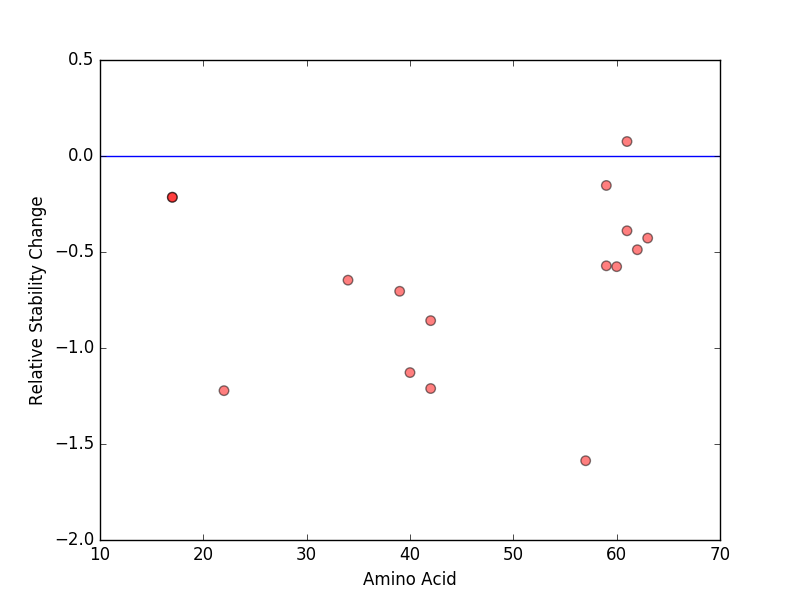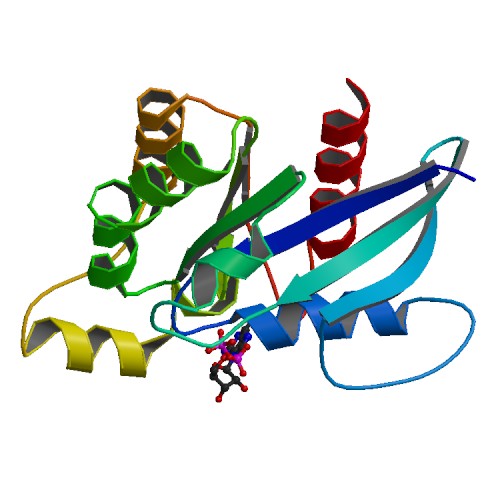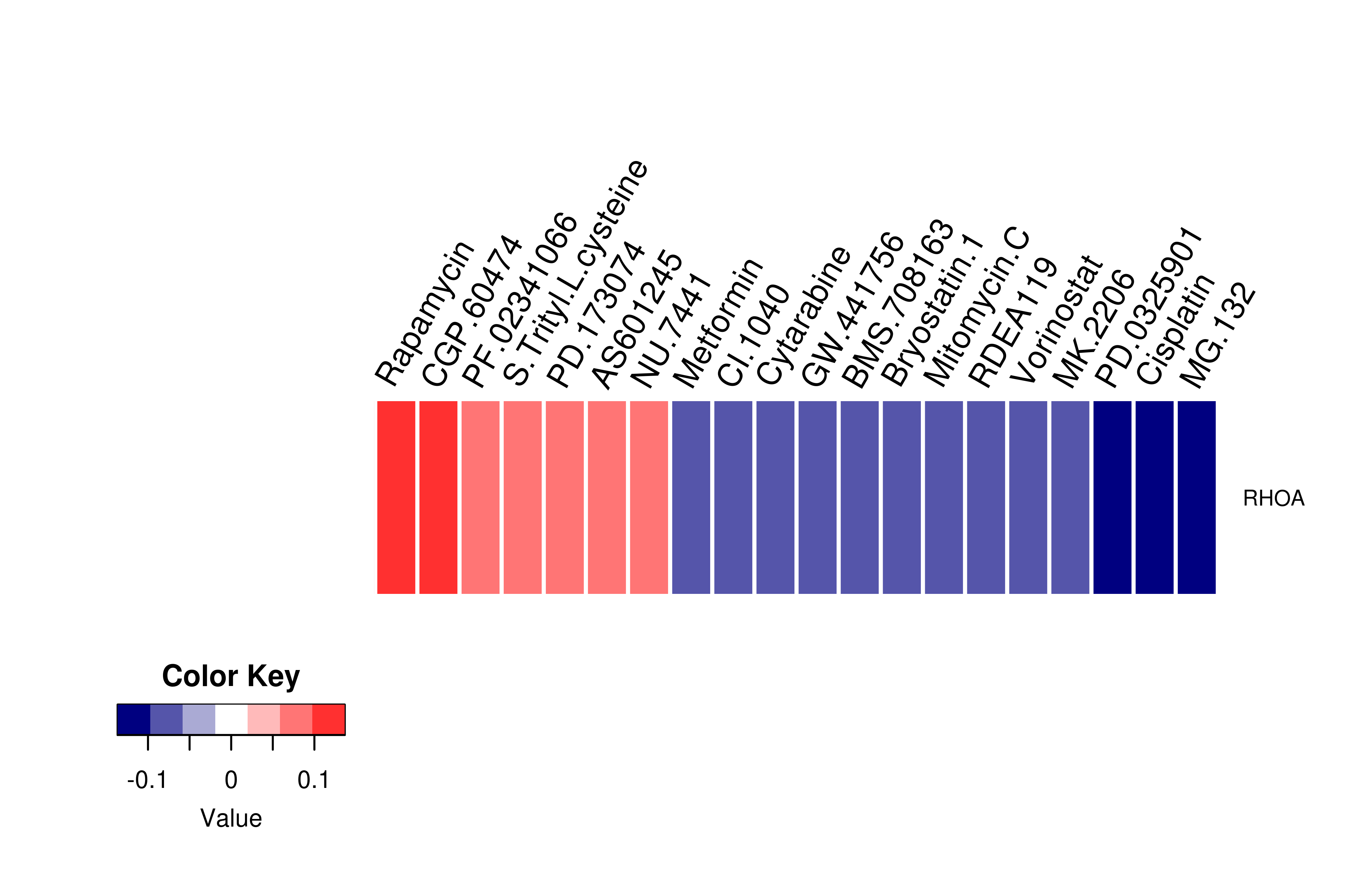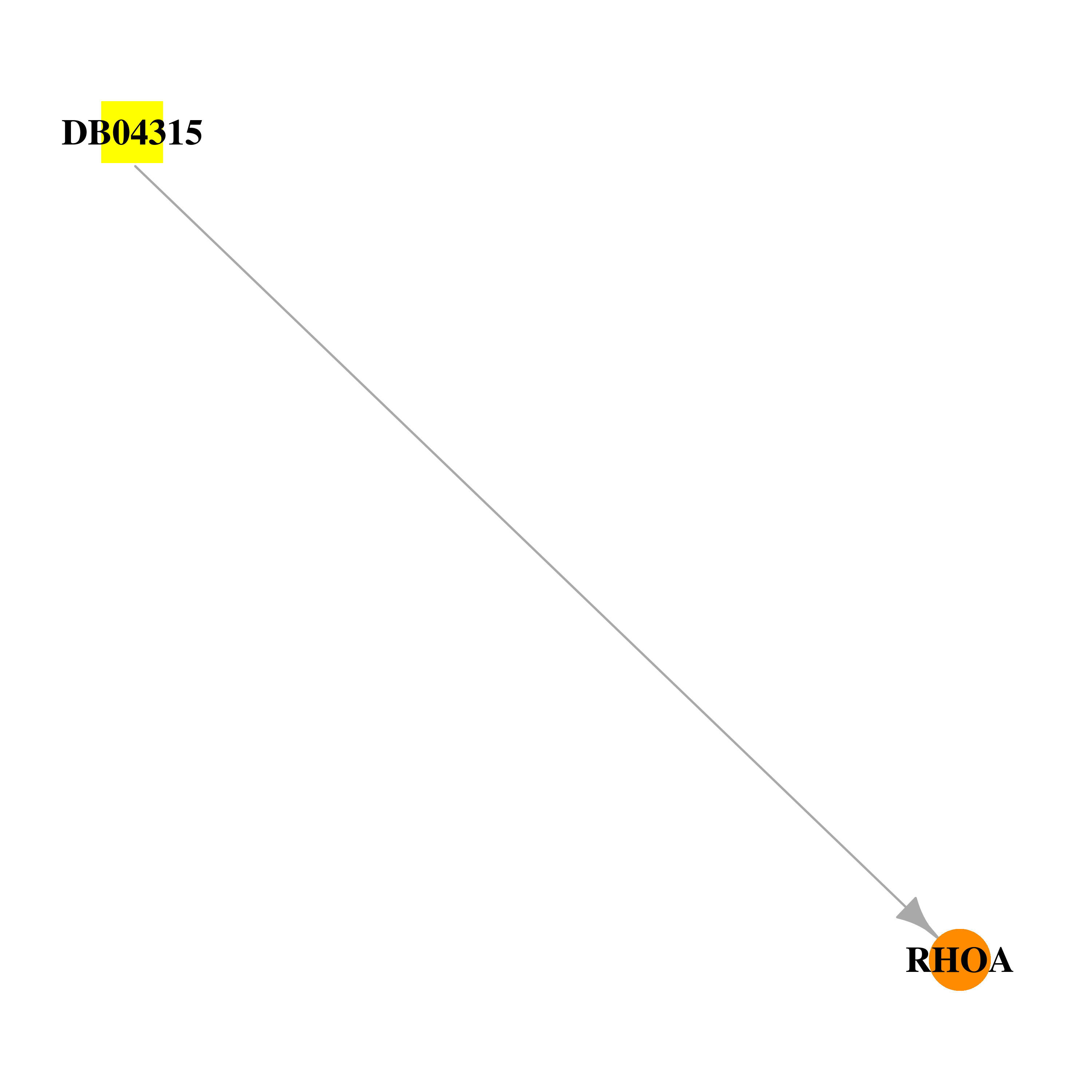| LBS | AA sequence | # species | Species |
A15 | IVGDGACGKTC | 10 | Homo sapiens, Bos taurus, Mus musculus, Rattus norvegicus, Danio rerio, Schizosaccharomyces pombe (strain 972 / ATCC 24843), Schizosaccharomyces pombe (strain 972 / ATCC 24843), Saccharomyces cerevisiae (strain ATCC 204508 / S288c), Kluyveromyces lactis ( | A161 | YMECSAKTKDG | 5 | Homo sapiens, Bos taurus, Mus musculus, Rattus norvegicus, Danio rerio | A161 | YLECSAKLNEG | 1 | Schizosaccharomyces pombe (strain 972 / ATCC 24843) | A161 | YLECSAKTNEG | 1 | Schizosaccharomyces pombe (strain 972 / ATCC 24843) | A161 | YYECSAKTGYG | 1 | Saccharomyces cerevisiae (strain ATCC 204508 / S288c) | A161 | YIECSAKTGYG | 1 | Kluyveromyces lactis (strain ATCC 8585 / CBS 2359 / DSM 70799 / NBRC 1267 / NRRL Y-1140 / WM37) | A161 | YIECSAKTGFG | 1 | Ashbya gossypii (strain ATCC 10895 / CBS 109.51 / FGSC 9923 / NRRL Y-1056) | A61 | ALWDTAGQEDY | 10 | Homo sapiens, Bos taurus, Mus musculus, Rattus norvegicus, Danio rerio, Schizosaccharomyces pombe (strain 972 / ATCC 24843), Schizosaccharomyces pombe (strain 972 / ATCC 24843), Saccharomyces cerevisiae (strain ATCC 204508 / S288c), Kluyveromyces lactis ( | C16 | VGDGACGKTCL | 10 | Homo sapiens, Bos taurus, Mus musculus, Rattus norvegicus, Danio rerio, Schizosaccharomyces pombe (strain 972 / ATCC 24843), Schizosaccharomyces pombe (strain 972 / ATCC 24843), Saccharomyces cerevisiae (strain ATCC 204508 / S288c), Kluyveromyces lactis ( | C20 | ACGKTCLLIVF | 10 | Homo sapiens, Bos taurus, Mus musculus, Rattus norvegicus, Danio rerio, Schizosaccharomyces pombe (strain 972 / ATCC 24843), Schizosaccharomyces pombe (strain 972 / ATCC 24843), Saccharomyces cerevisiae (strain ATCC 204508 / S288c), Kluyveromyces lactis ( | D120 | VGNKKDLRNDE | 5 | Homo sapiens, Bos taurus, Mus musculus, Rattus norvegicus, Danio rerio | D120 | VGCKVDLRNDP | 2 | Schizosaccharomyces pombe (strain 972 / ATCC 24843), Saccharomyces cerevisiae (strain ATCC 204508 / S288c) | D120 | VGCKADLRNDP | 2 | Kluyveromyces lactis (strain ATCC 8585 / CBS 2359 / DSM 70799 / NBRC 1267 / NRRL Y-1140 / WM37), Ashbya gossypii (strain ATCC 10895 / CBS 109.51 / FGSC 9923 / NRRL Y-1056) | D120 | VACKADLRNDP | 1 | Schizosaccharomyces pombe (strain 972 / ATCC 24843) | D59 | ELALWDTAGQE | 10 | Homo sapiens, Bos taurus, Mus musculus, Rattus norvegicus, Danio rerio, Schizosaccharomyces pombe (strain 972 / ATCC 24843), Schizosaccharomyces pombe (strain 972 / ATCC 24843), Saccharomyces cerevisiae (strain ATCC 204508 / S288c), Kluyveromyces lactis ( | E40 | VPTVFENYVAD | 8 | Homo sapiens, Bos taurus, Mus musculus, Rattus norvegicus, Danio rerio, Schizosaccharomyces pombe (strain 972 / ATCC 24843), Schizosaccharomyces pombe (strain 972 / ATCC 24843), Saccharomyces cerevisiae (strain ATCC 204508 / S288c) | E40 | VPTVFDNYVAD | 2 | Kluyveromyces lactis (strain ATCC 8585 / CBS 2359 / DSM 70799 / NBRC 1267 / NRRL Y-1140 / WM37), Ashbya gossypii (strain ATCC 10895 / CBS 109.51 / FGSC 9923 / NRRL Y-1056) | E97 | LENIPEKWTPE | 5 | Homo sapiens, Bos taurus, Mus musculus, Rattus norvegicus, Danio rerio | E97 | LDNVQEKWISE | 2 | Schizosaccharomyces pombe (strain 972 / ATCC 24843), Schizosaccharomyces pombe (strain 972 / ATCC 24843) | E97 | LENVMEKWISE | 2 | Kluyveromyces lactis (strain ATCC 8585 / CBS 2359 / DSM 70799 / NBRC 1267 / NRRL Y-1140 / WM37), Ashbya gossypii (strain ATCC 10895 / CBS 109.51 / FGSC 9923 / NRRL Y-1056) | E97 | LENVQEKWIAE | 1 | Saccharomyces cerevisiae (strain ATCC 204508 / S288c) | F30 | FSKDQFPEVYV | 5 | Homo sapiens, Bos taurus, Mus musculus, Rattus norvegicus, Danio rerio | F30 | FSKGTFPEVYV | 2 | Schizosaccharomyces pombe (strain 972 / ATCC 24843), Schizosaccharomyces pombe (strain 972 / ATCC 24843) | F30 | FAKGKFPQVYV | 2 | Kluyveromyces lactis (strain ATCC 8585 / CBS 2359 / DSM 70799 / NBRC 1267 / NRRL Y-1140 / WM37), Ashbya gossypii (strain ATCC 10895 / CBS 109.51 / FGSC 9923 / NRRL Y-1056) | F30 | FSKGQFPEVYV | 1 | Saccharomyces cerevisiae (strain ATCC 204508 / S288c) | G14 | VIVGDGACGKT | 10 | Homo sapiens, Bos taurus, Mus musculus, Rattus norvegicus, Danio rerio, Schizosaccharomyces pombe (strain 972 / ATCC 24843), Schizosaccharomyces pombe (strain 972 / ATCC 24843), Saccharomyces cerevisiae (strain ATCC 204508 / S288c), Kluyveromyces lactis ( | G17 | GDGACGKTCLL | 10 | Homo sapiens, Bos taurus, Mus musculus, Rattus norvegicus, Danio rerio, Schizosaccharomyces pombe (strain 972 / ATCC 24843), Schizosaccharomyces pombe (strain 972 / ATCC 24843), Saccharomyces cerevisiae (strain ATCC 204508 / S288c), Kluyveromyces lactis ( | G62 | LWDTAGQEDYD | 10 | Homo sapiens, Bos taurus, Mus musculus, Rattus norvegicus, Danio rerio, Schizosaccharomyces pombe (strain 972 / ATCC 24843), Schizosaccharomyces pombe (strain 972 / ATCC 24843), Saccharomyces cerevisiae (strain ATCC 204508 / S288c), Kluyveromyces lactis ( | K118 | ILVGNKKDLRN | 5 | Homo sapiens, Bos taurus, Mus musculus, Rattus norvegicus, Danio rerio | K118 | ILVGCKADLRN | 2 | Kluyveromyces lactis (strain ATCC 8585 / CBS 2359 / DSM 70799 / NBRC 1267 / NRRL Y-1140 / WM37), Ashbya gossypii (strain ATCC 10895 / CBS 109.51 / FGSC 9923 / NRRL Y-1056) | K118 | LLVGCKVDLRN | 1 | Schizosaccharomyces pombe (strain 972 / ATCC 24843) | K118 | LLVACKADLRN | 1 | Schizosaccharomyces pombe (strain 972 / ATCC 24843) | K118 | ILVGCKVDLRN | 1 | Saccharomyces cerevisiae (strain ATCC 204508 / S288c) | K162 | MECSAKTKDGV | 5 | Homo sapiens, Bos taurus, Mus musculus, Rattus norvegicus, Danio rerio | K162 | LECSAKLNEGV | 1 | Schizosaccharomyces pombe (strain 972 / ATCC 24843) | K162 | LECSAKTNEGV | 1 | Schizosaccharomyces pombe (strain 972 / ATCC 24843) | K162 | YECSAKTGYGV | 1 | Saccharomyces cerevisiae (strain ATCC 204508 / S288c) | K162 | IECSAKTGYGV | 1 | Kluyveromyces lactis (strain ATCC 8585 / CBS 2359 / DSM 70799 / NBRC 1267 / NRRL Y-1140 / WM37) | K162 | IECSAKTGFGV | 1 | Ashbya gossypii (strain ATCC 10895 / CBS 109.51 / FGSC 9923 / NRRL Y-1056) | K18 | DGACGKTCLLI | 10 | Homo sapiens, Bos taurus, Mus musculus, Rattus norvegicus, Danio rerio, Schizosaccharomyces pombe (strain 972 / ATCC 24843), Schizosaccharomyces pombe (strain 972 / ATCC 24843), Saccharomyces cerevisiae (strain ATCC 204508 / S288c), Kluyveromyces lactis ( | L121 | GNKKDLRNDEH | 5 | Homo sapiens, Bos taurus, Mus musculus, Rattus norvegicus, Danio rerio | L121 | GCKADLRNDPQ | 2 | Kluyveromyces lactis (strain ATCC 8585 / CBS 2359 / DSM 70799 / NBRC 1267 / NRRL Y-1140 / WM37), Ashbya gossypii (strain ATCC 10895 / CBS 109.51 / FGSC 9923 / NRRL Y-1056) | L121 | GCKVDLRNDPK | 1 | Schizosaccharomyces pombe (strain 972 / ATCC 24843) | L121 | ACKADLRNDPK | 1 | Schizosaccharomyces pombe (strain 972 / ATCC 24843) | L121 | GCKVDLRNDPQ | 1 | Saccharomyces cerevisiae (strain ATCC 204508 / S288c) | N41 | PTVFENYVADI | 5 | Homo sapiens, Bos taurus, Mus musculus, Rattus norvegicus, Danio rerio | N41 | PTVFENYVADV | 3 | Schizosaccharomyces pombe (strain 972 / ATCC 24843), Schizosaccharomyces pombe (strain 972 / ATCC 24843), Saccharomyces cerevisiae (strain ATCC 204508 / S288c) | N41 | PTVFDNYVADV | 2 | Kluyveromyces lactis (strain ATCC 8585 / CBS 2359 / DSM 70799 / NBRC 1267 / NRRL Y-1140 / WM37), Ashbya gossypii (strain ATCC 10895 / CBS 109.51 / FGSC 9923 / NRRL Y-1056) | N94 | PDSLENIPEKW | 5 | Homo sapiens, Bos taurus, Mus musculus, Rattus norvegicus, Danio rerio | N94 | PDSLENVMEKW | 2 | Kluyveromyces lactis (strain ATCC 8585 / CBS 2359 / DSM 70799 / NBRC 1267 / NRRL Y-1140 / WM37), Ashbya gossypii (strain ATCC 10895 / CBS 109.51 / FGSC 9923 / NRRL Y-1056) | N94 | PESLDNVQEKW | 1 | Schizosaccharomyces pombe (strain 972 / ATCC 24843) | N94 | PDSLDNVQEKW | 1 | Schizosaccharomyces pombe (strain 972 / ATCC 24843) | N94 | PDSLENVQEKW | 1 | Saccharomyces cerevisiae (strain ATCC 204508 / S288c) | P36 | PEVYVPTVFEN | 8 | Homo sapiens, Bos taurus, Mus musculus, Rattus norvegicus, Danio rerio, Schizosaccharomyces pombe (strain 972 / ATCC 24843), Schizosaccharomyces pombe (strain 972 / ATCC 24843), Saccharomyces cerevisiae (strain ATCC 204508 / S288c) | P36 | PQVYVPTVFDN | 2 | Kluyveromyces lactis (strain ATCC 8585 / CBS 2359 / DSM 70799 / NBRC 1267 / NRRL Y-1140 / WM37), Ashbya gossypii (strain ATCC 10895 / CBS 109.51 / FGSC 9923 / NRRL Y-1056) | Q63 | WDTAGQEDYDR | 10 | Homo sapiens, Bos taurus, Mus musculus, Rattus norvegicus, Danio rerio, Schizosaccharomyces pombe (strain 972 / ATCC 24843), Schizosaccharomyces pombe (strain 972 / ATCC 24843), Saccharomyces cerevisiae (strain ATCC 204508 / S288c), Kluyveromyces lactis ( | S160 | GYMECSAKTKD | 5 | Homo sapiens, Bos taurus, Mus musculus, Rattus norvegicus, Danio rerio | S160 | KYLECSAKLNE | 1 | Schizosaccharomyces pombe (strain 972 / ATCC 24843) | S160 | KYLECSAKTNE | 1 | Schizosaccharomyces pombe (strain 972 / ATCC 24843) | S160 | GYYECSAKTGY | 1 | Saccharomyces cerevisiae (strain ATCC 204508 / S288c) | S160 | DYIECSAKTGY | 1 | Kluyveromyces lactis (strain ATCC 8585 / CBS 2359 / DSM 70799 / NBRC 1267 / NRRL Y-1140 / WM37) | S160 | EYIECSAKTGF | 1 | Ashbya gossypii (strain ATCC 10895 / CBS 109.51 / FGSC 9923 / NRRL Y-1056) | T19 | GACGKTCLLIV | 10 | Homo sapiens, Bos taurus, Mus musculus, Rattus norvegicus, Danio rerio, Schizosaccharomyces pombe (strain 972 / ATCC 24843), Schizosaccharomyces pombe (strain 972 / ATCC 24843), Saccharomyces cerevisiae (strain ATCC 204508 / S288c), Kluyveromyces lactis ( | T37 | EVYVPTVFENY | 8 | Homo sapiens, Bos taurus, Mus musculus, Rattus norvegicus, Danio rerio, Schizosaccharomyces pombe (strain 972 / ATCC 24843), Schizosaccharomyces pombe (strain 972 / ATCC 24843), Saccharomyces cerevisiae (strain ATCC 204508 / S288c) | T37 | QVYVPTVFDNY | 2 | Kluyveromyces lactis (strain ATCC 8585 / CBS 2359 / DSM 70799 / NBRC 1267 / NRRL Y-1140 / WM37), Ashbya gossypii (strain ATCC 10895 / CBS 109.51 / FGSC 9923 / NRRL Y-1056) | T60 | LALWDTAGQED | 10 | Homo sapiens, Bos taurus, Mus musculus, Rattus norvegicus, Danio rerio, Schizosaccharomyces pombe (strain 972 / ATCC 24843), Schizosaccharomyces pombe (strain 972 / ATCC 24843), Saccharomyces cerevisiae (strain ATCC 204508 / S288c), Kluyveromyces lactis ( | V35 | FPEVYVPTVFE | 8 | Homo sapiens, Bos taurus, Mus musculus, Rattus norvegicus, Danio rerio, Schizosaccharomyces pombe (strain 972 / ATCC 24843), Schizosaccharomyces pombe (strain 972 / ATCC 24843), Saccharomyces cerevisiae (strain ATCC 204508 / S288c) | V35 | FPQVYVPTVFD | 2 | Kluyveromyces lactis (strain ATCC 8585 / CBS 2359 / DSM 70799 / NBRC 1267 / NRRL Y-1140 / WM37), Ashbya gossypii (strain ATCC 10895 / CBS 109.51 / FGSC 9923 / NRRL Y-1056) | Y34 | QFPEVYVPTVF | 6 | Homo sapiens, Bos taurus, Mus musculus, Rattus norvegicus, Danio rerio, Saccharomyces cerevisiae (strain ATCC 204508 / S288c) | Y34 | TFPEVYVPTVF | 2 | Schizosaccharomyces pombe (strain 972 / ATCC 24843), Schizosaccharomyces pombe (strain 972 / ATCC 24843) | Y34 | KFPQVYVPTVF | 2 | Kluyveromyces lactis (strain ATCC 8585 / CBS 2359 / DSM 70799 / NBRC 1267 / NRRL Y-1140 / WM37), Ashbya gossypii (strain ATCC 10895 / CBS 109.51 / FGSC 9923 / NRRL Y-1056) |
 Gene summary
Gene summary  Gene ontology having evidence of Inferred from Direct Assay (IDA) from Entrez
Gene ontology having evidence of Inferred from Direct Assay (IDA) from Entrez  Lollipop-style diagram of mutations at LBS in amino-acid sequence.
Lollipop-style diagram of mutations at LBS in amino-acid sequence. 
 Cancer type specific mutLBS sorted by frequency
Cancer type specific mutLBS sorted by frequency Clinical information for RHOA from My Cancer Genome.
Clinical information for RHOA from My Cancer Genome.  Relative protein structure stability change (ΔΔE) using Mupro 1.1
Relative protein structure stability change (ΔΔE) using Mupro 1.1  : nsSNV at non-LBS
: nsSNV at non-LBS : nsSNV at LBS
: nsSNV at LBS
 nsSNVs sorted by the relative stability change of protein structure by each mutation
nsSNVs sorted by the relative stability change of protein structure by each mutation  Structure image for RHOA from PDB
Structure image for RHOA from PDB
 Differential gene expression between mutated and non-mutated LBS samples in all 16 major cancer types
Differential gene expression between mutated and non-mutated LBS samples in all 16 major cancer types Differential co-expressed gene network based on protein-protein interaction data (CePIN)
Differential co-expressed gene network based on protein-protein interaction data (CePIN) Gene level disease information (DisGeNet)
Gene level disease information (DisGeNet)  Mutation level pathogenic information (ClinVar annotation)
Mutation level pathogenic information (ClinVar annotation)  Gene expression profile of anticancer drug treated cell-lines (CCLE)
Gene expression profile of anticancer drug treated cell-lines (CCLE)
 Gene-centered drug-gene interaction network
Gene-centered drug-gene interaction network 
 Drug information targeting mutLBSgene (Approved drugs only)
Drug information targeting mutLBSgene (Approved drugs only)
 Gene-centered ligand-gene interaction network
Gene-centered ligand-gene interaction network 
 Ligands binding to mutated ligand binding site of RHOA go to BioLip
Ligands binding to mutated ligand binding site of RHOA go to BioLip Multiple alignments for P61586 in multiple species
Multiple alignments for P61586 in multiple species 
